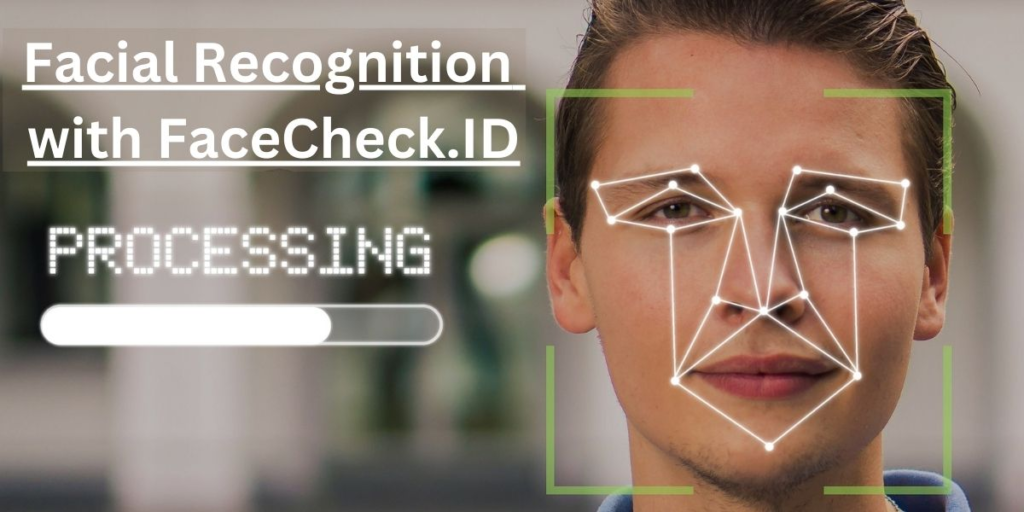
FaceCheck ID
In the era of digital transformation, where security and convenience are paramount, facial recognition technology has emerged as a game-changer. Among the plethora of applications, FaceCheck ID stands out as a beacon of innovation, revolutionizing the way we authenticate identities. In this comprehensive guide, we delve into the evolution, functionality, and implications of FaceCheck ID, exploring its significance in today’s landscape.
Table of Contents
Understanding FaceCheck ID: A Primer

FaceCheck ID, at its core, is a sophisticated identity verification tool that utilizes facial recognition technology to authenticate individuals. Unlike traditional authentication methods such as passwords or PINs, which are susceptible to breaches and user error, FaceCheck ID offers a seamless and secure alternative. By analyzing unique facial features, it creates a digital representation, or “faceprint,” which serves as a reliable identifier.
The Importance of FaceCheck ID
The adoption of FaceCheck ID heralds a paradigm shift in identity verification, offering a host of benefits:
- Enhanced Security: FaceCheck ID provides a robust authentication mechanism that is difficult to replicate or spoof, mitigating the risk of unauthorized access.
- Convenience: With FaceCheck ID, users can effortlessly unlock devices, access secure facilities, and authorize transactions with a simple glance, eliminating the need for cumbersome passwords or PINs.
- Versatility: From smartphones and tablets to access control systems and payment terminals, FaceCheck ID can be seamlessly integrated into various applications, catering to diverse user needs.
How FaceCheck ID Works: The Authentication Process Demystified

At the heart of FaceCheck ID lies facial recognition technology, a sophisticated algorithm that processes and analyzes facial features to verify identity. The authentication process typically involves the following steps:
- Image Capture: A digital image or video of the user’s face is captured using a camera or webcam.
- Feature Extraction: The captured image is analyzed to extract unique facial features, such as the distance between eyes, shape of the nose, and contours of the jawline.
- Faceprint Creation: Based on the extracted features, a digital template, or faceprint, is created, representing the user’s unique biometric signature.
- Comparison: The generated faceprint is then compared against stored templates in the system’s database to determine a match.
Facial Recognition Technology: The Science Behind FaceCheck ID
Facial recognition technology relies on sophisticated algorithms and machine learning techniques to analyze and interpret facial features. By leveraging neural networks and deep learning algorithms, it can accurately identify individuals, even in varying lighting conditions or facial expressions. This advanced technology enables FaceCheck ID to deliver reliable and instantaneous authentication, ensuring a seamless user experience.
Applications of FaceCheck ID: From Mobile Devices to Corporate Security Systems

The versatility of FaceCheck ID extends across a myriad of applications, including:
- Mobile Devices: FaceCheck ID is increasingly integrated into smartphones and tablets as a secure authentication method, offering users a convenient and secure way to unlock their devices and access sensitive information.
- Access Control Systems: In corporate environments and high-security facilities, FaceCheck ID serves as a reliable access control mechanism, restricting entry to authorized personnel based on facial recognition.
- Payment Authentication: FaceCheck ID can be seamlessly integrated into payment terminals and e-commerce platforms to authenticate transactions, offering a frictionless checkout experience for consumers.
Benefits of FaceCheck ID Adoption
The adoption of Face Check ID offers numerous benefits for both individuals and organizations:
- Enhanced Security: By replacing traditional authentication methods with facial recognition technology, Face Check ID enhances security measures, reducing the risk of unauthorized access and identity theft.
- Improved User Experience: Face Check ID streamlines authentication processes, offering users a seamless and intuitive experience devoid of passwords or PINs.
- Reduced Fraud: The robust authentication capabilities of Face Check ID mitigate the risk of fraudulent activities, safeguarding sensitive information and financial transactions.
Challenges and Concerns: Addressing Privacy and Reliability
Despite its myriad benefits, Face Check ID is not without its challenges and concerns:
- Privacy Issues: The collection and storage of biometric data raise privacy concerns, prompting scrutiny over data protection and consent.
- Accuracy and Reliability: While facial recognition technology has made significant strides, concerns regarding accuracy and reliability persist, particularly concerning demographic biases and susceptibility to spoofing attacks.
Ensuring Ethical Deployment: The Role of Regulation and Oversight
Addressing these challenges requires a multifaceted approach, encompassing technological innovation, regulatory oversight, and ethical considerations. Regulatory frameworks must be established to govern the collection, storage, and use of biometric data, ensuring transparency, accountability, and user consent. Moreover, ongoing research and development efforts are essential to enhancing the accuracy, reliability, and fairness of facial recognition technology, mitigating biases and vulnerabilities.
The Future of Face Check ID: Innovations and Opportunities
Looking ahead, the future of Face Check ID is ripe with possibilities:
- Integration with Emerging Technologies: Face Check ID is poised to integrate with emerging technologies such as augmented reality and artificial intelligence, further enhancing its capabilities and applicability.
- Regulatory Developments: Regulatory bodies are expected to enact legislation and guidelines aimed at safeguarding user privacy, ensuring algorithmic fairness, and fostering responsible deployment of facial recognition technology.
Conclusion: Embracing the Promise of Face Check ID
In conclusion, Face Check ID represents a significant advancement in identity verification technology, offering a potent combination of security, convenience, and versatility. Its widespread adoption across various sectors underscores its relevance and potential to transform authentication processes. However, addressing concerns regarding privacy, accuracy, and regulatory compliance is imperative to realizing its full benefits and ensuring ethical deployment.
FAQs
- Is Face Check ID secure?
- Yes, Face Check ID offers robust security features that make it difficult to spoof or replicate.
- Can Face Check ID be used for payment authentication?
- Absolutely, Face Check ID can be seamlessly integrated into payment systems for secure authentication.
- Are there any privacy concerns associated with Face Check ID?
- While Face Check ID enhances security, concerns regarding the collection and storage of biometric data have been raised.
- How accurate is Face Check ID?
- Face Check ID boasts high accuracy rates; however, occasional discrepancies may occur, necessitating ongoing refinement.
- What is the future outlook for Face Check ID?
- The future of Face Check ID looks promising, with continued advancements in technology and regulatory frameworks ensuring its responsible and ethical deployment.





